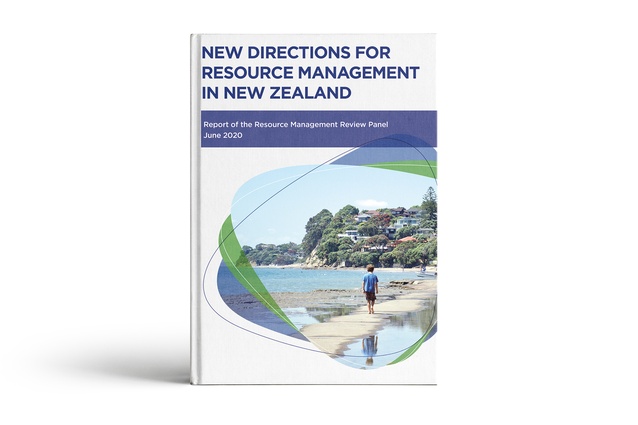Resource Management Act Randerson Report: Part 1
The government has received the Randerson Report, a highly overdue review of the 1991 Resource Management Act. We ask a few professionals what this might mean for the architecture industry and their early impressions of the report.
On 29 July 2020, the government received an independent review of the Resource Management Act (RMA). The nearly 600 page document, prepared by retired Court of Appeal Judge Tony Randerson QC, gives advice on how to move forward by practically repealling the RMA and starting again.
The current RMA has been deemed, almost unanimously, as an outdated and overly complex piece of legislation and is seen by both sides of the political spectrum as a partial cause of the housing shortage as well as stifling innovation and better managed urban growth.
We asked a few architects with an interest in the topic to give us their initial reactions to the Randerson report.
Teena Hale Pennington
Chief Executive, Te Kāhui Whaihanga New Zealand Institute of Architects

Given the complicated, costly and often inconsistent outcomes delivered under the current legislation, the report is long overdue. The RMA has been challenging for many years and this comprehensive work is positive and has the potential to open up new opportunities.
In making two legislative recommendations – for a Natural and Built Environments Act and a Strategic Planning Act – the report recognises the need to reconcile strategic long-term perspectives with the need for immediacy in decision-making.
It also recognises that mana whenua have not been able to engage meaningfully with the RMA regime, despite a large number of legislative provisions intended to facilitate engagement.
Many will welcome the proposed simplification of the system and policies informing decisions. In theory, the overlapping and often competing regional plans operating nationally should reduce from 100 to 14, which will surely improve the usability and understanding of the resource management.
Obviously, there are significant questions of funding and responsibility raised by the report, for example, explicit mechanisms for compensating landowners for losses caused by sea-level rise and other climate change impacts. The detail of implementing the report will be critical and important that the profession is meaningfully involved in the detail, especially the spatially planning and legislative provisions.
Tony Watkins
Architect

If I needed a heart operation I would rather have it done by a surgeon than a retired Court judge. A judge, by definition, moves in a world of winners and losers, and is committed to a polarised, adversarial legal system making money out of conflict and aggression. The ‘them’ and ‘us’ of Fascist politics. The legal profession should be kept well away from environmental issues.
Only a lawyer would even suggest a juxtaposition between the “natural environment” and the “built environment”. We are part of nature, not set apart from it. In 1993 in Chicago the architects of the world signed up to the ‘Declaration of Interdependence’. Harmony and integration, rather than divisions and distinctions. The concept of Kaitiakitanga, which had been enshrined in the RMA was brought to the world stage. It is not the RMA that has caused our faceless, placeless, dehumanised architecture, or the sixth great era of extinctions. Blaming the RMA is just a fashionable excuse for opening up the planet to ever more exploitation, rather than dealing with the real issues. Neoliberalism promised that the private sector would deliver.
Instead, it has rewarded greed, selfishness, envy and pride, bringing the human race to the brink of extinction. The inability of our institutions to respond to climate change suggests that concentrations of power and extreme inequality are more important problems than the RMA.
This is not the time to be rearranging the deckchairs. We have a design problem. We need to lift the whole ball game above the negative mediocrity of legal bottom lines. Architecture is the primary cause of climate change, but also offers a vast array of positive options for saving the planet. Magic, poetry, awe and wonder are all around us in the natural world. Before we began building the air was clear and the water was pure.










